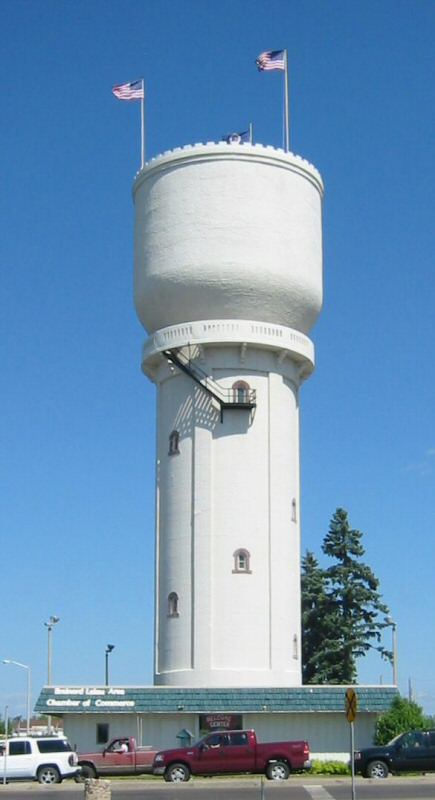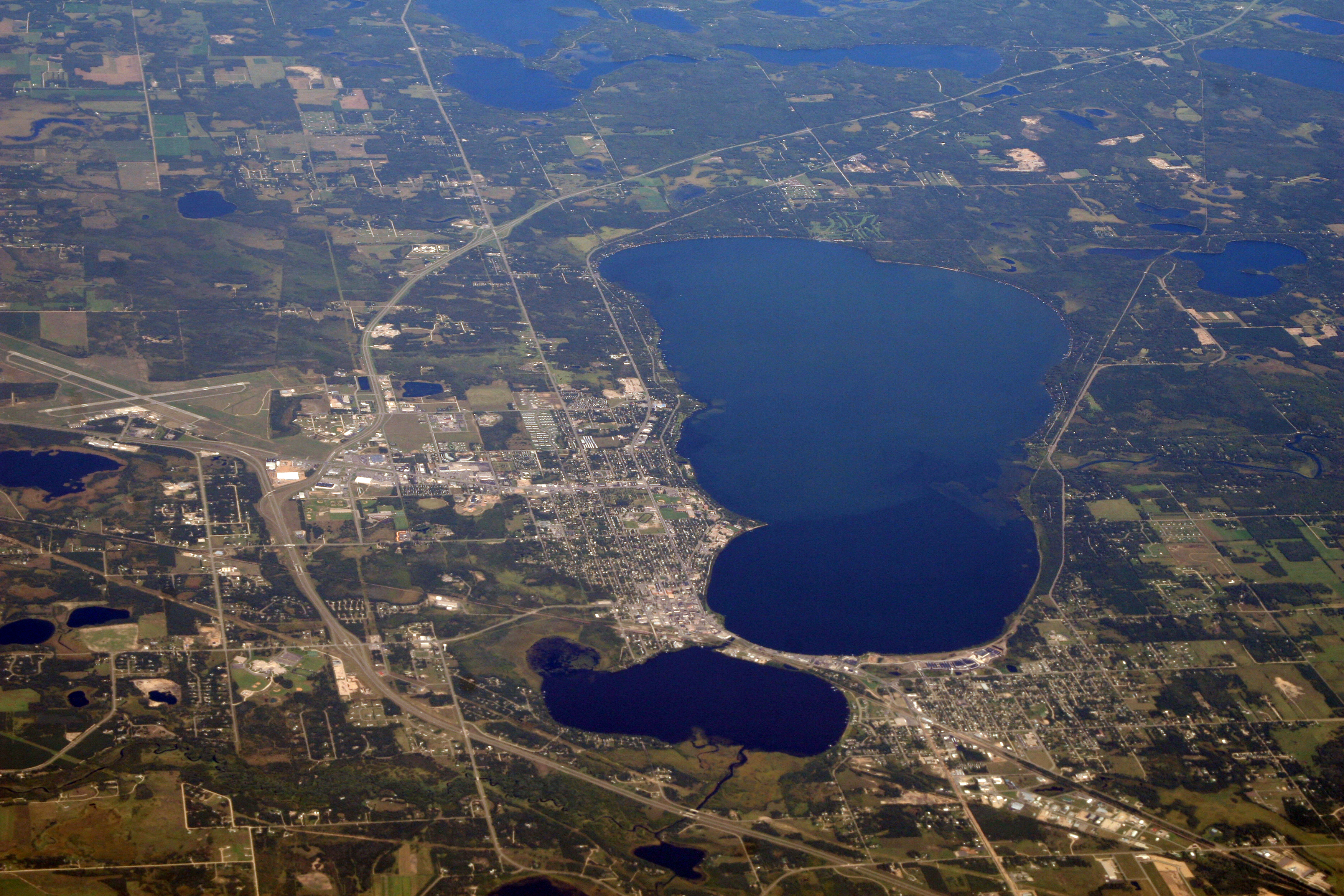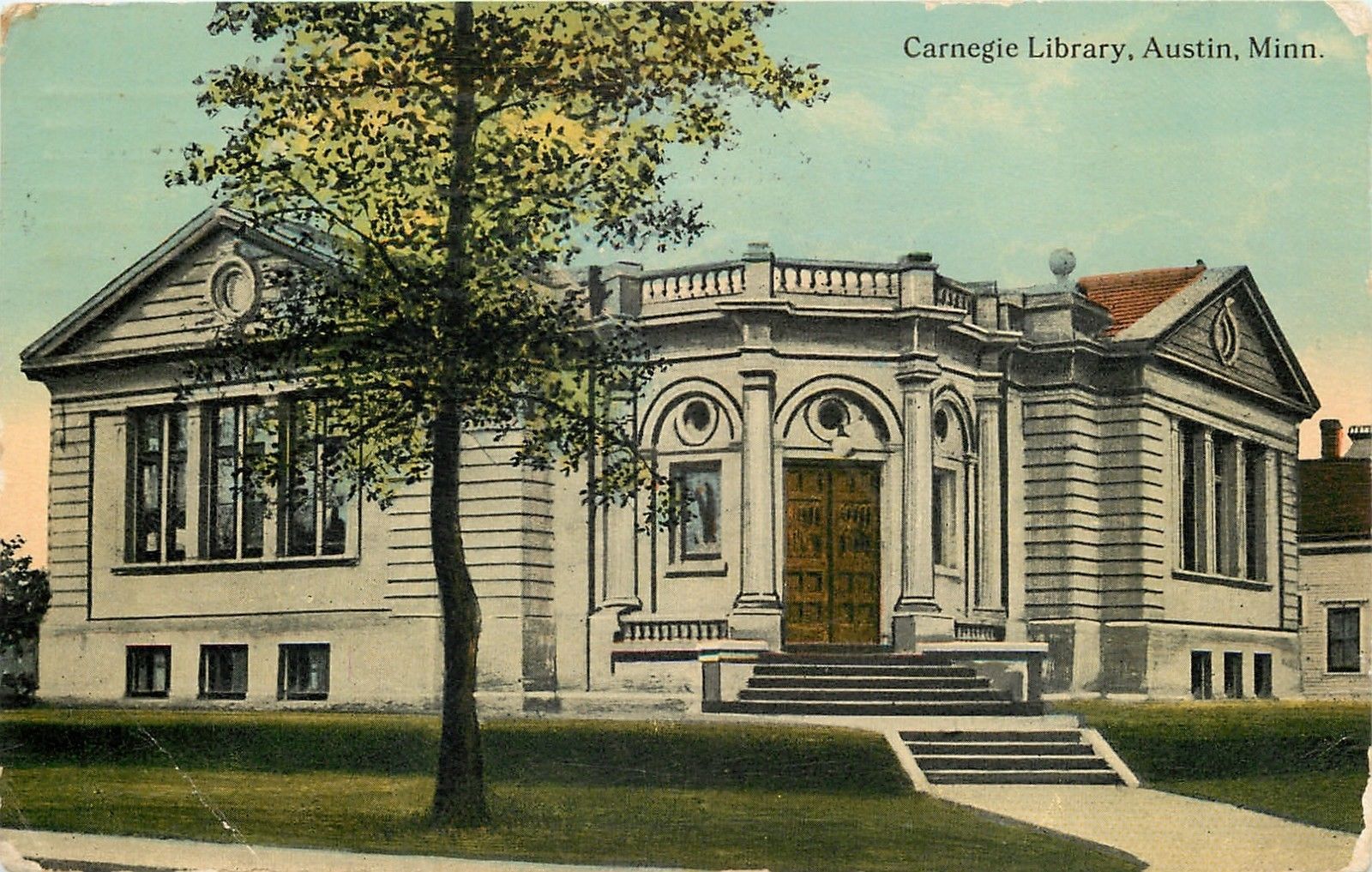|
List Of Carnegie Libraries In Minnesota
The following list of Carnegie libraries in Minnesota provides detailed information on Carnegie libraries in Minnesota, United States, where 65 public libraries were built from 57Jones erroneously reports this number as 64, while Bobinski reports the number of grants at 58. However, Jones lists 65 public libraries in his gazetteer, and Anderson lists 57 grants. grants (totaling $969,375) awarded by the Carnegie Corporation of New York from 1901 to 1918. In addition, Hamline University in Saint Paul was awarded a $30,000 grant on March 12, 1906, to construct an academic library. In Minnesota grants were given between 1899 and 1918. Of Minnesota's 66 original Carnegie libraries, 48 are still standing. 25 continue to house public libraries while others have been adapted into art centers or office space. Of the 18 lost libraries, one burned down and the rest were demolished, often because they were unworkably deficient in handicap accessibility. 38 of the surviving libraries are ... [...More Info...] [...Related Items...] OR: [Wikipedia] [Google] [Baidu] |
Alexandria, Minnesota
Alexandria is a city in and the county seat of Douglas County, Minnesota, United States. First settled in 1858, it was named after brothers Alexander and William Kinkead from Maryland. The form of the name alludes to Alexandria, Egypt, a center of learning and civilization. The village of Alexandria was incorporated February 20, 1877. Its city charter was adopted in 1908, and it was incorporated as a city in 1909. W. E. Hicks was pivotal to the town's early development. He purchased the townsite in 1868 and established a mill, hotel, newspaper, and store. He donated property for a courthouse, jail, and two churches: Methodist and Congregational. The population was 14,335 as of the 2020 census. Alexandria is near I-94, along Minnesota State Highways 27 and 29. It is ten miles south of Lake Carlos State Park. In 2013, Alexandria was named a "Top 10 Best Small Town" by the Livability website. The city is often abbreviated as "Alex" (sometimes pronounced "Alec"). Economy The c ... [...More Info...] [...Related Items...] OR: [Wikipedia] [Google] [Baidu] |
Brainerd Carnegie Library 2016
Brainerd may refer to: Place names in the United States * Brainerd, a neighborhood in Chicago, Illinois ** Brainerd station, a train station in Chicago * Brainerd, Kansas, an unincorporated community * Brainerd, Minnesota, a city ** Brainerd International Raceway, near Brainerd, Minnesota People * Brainerd (surname) * Brainerd (given name) Schools in the United States * Brainerd Institute, a former school for African Americans in Chester, South Carolina, expanded to include Brainerd Junior College in 1934 * Brainerd High School (Minnesota), Brainerd, Minnesota * Brainerd High School (Tennessee), Chattanooga, Tennessee * Brainerd School, a one-room schoolhouse in Mount Holly, New Jersey Other uses * Brainerd (band), an American hard rock band * Brainerd diarrhea * Brainerd Mission, a former Christian mission to the Cherokee in present-day Chattanooga, Tennessee See also * East Brainerd, Tennessee East Brainerd is an unincorporated community and former census-designated pla ... [...More Info...] [...Related Items...] OR: [Wikipedia] [Google] [Baidu] |
Brainerd, Minnesota
Brainerd is a city in Crow Wing County, Minnesota, United States. Its population was 14,395 at the 2020 census. It is the county seat of Crow Wing County. Brainerd straddles the Mississippi River several miles upstream from its confluence with the Crow Wing River, having been founded as a site for a railroad crossing above the confluence. Brainerd is the principal city of the Brainerd Micropolitan Area, a micropolitan area covering Cass and Crow Wing counties and with a combined population of 96,189 at the 2020 census. The city is well known for being the partial setting of the 1996 film ''Fargo''. History The area that is now Brainerd was formerly Ojibwe territory. Brainerd was first seen by European settlers on Christmas Day in 1805, when Zebulon Pike stopped there while searching for the headwaters of the Mississippi River. Crow Wing Village, a fur and logging community near Fort Ripley, brought settlers to the area in the mid-19th century. In those early year ... [...More Info...] [...Related Items...] OR: [Wikipedia] [Google] [Baidu] |
Brainerd Public Library
The historic Brainerd Public Library is a Carnegie library built in 1904. The building is located at 206 7th Street North in Brainerd, Minnesota, United States, and is in the Classical Revival architectural style using granite and brick. The façade of the building features a portico with four columns holding up a pedimented gable. Although the building was originally a library, it later was used briefly as an antiques store, and is currently a law office. The Brainerd Public Library is now located at 416 S 5th Street in a building constructed in 1986. References Carnegie libraries in Minnesota Buildings and structures in Crow Wing County, Minnesota Libraries on the National Register of Historic Places in Minnesota Library buildings completed in 1904 National Register of Historic Places in Crow Wing County, Minnesota Public libraries in Minnesota Former library buildings in the United States {{Minnesota-NRHP-stub ... [...More Info...] [...Related Items...] OR: [Wikipedia] [Google] [Baidu] |
Benson, Minnesota
Benson is a city in Swift County, Minnesota, United States, along the Chippewa River. The population was 3,240 at the 2010 census. It is the county seat. History Benson was platted in 1870 when the railroad was extended to that point. As the end of the tracks, Benson became a lively trading center. Benson was the market for a 100-mile area in almost all directions. The city was named for Ben H. Benson, a Norwegian settler. Benson was incorporated as a city in 1908. The town's early history included many tragedies, such as an 1872 smallpox epidemic, an 1876 grasshopper plague, and a fire in 1880 that wiped out a whole city block. In 1869, the first general store in Benson was established. A post office has been in operation at Benson since 1870. ThBenson Public Librarywas established in 1911 after a generous donation. In 1912, the Swift County Hospital was built, originally housing 19 patients. Th Swift County-Benson Hospitalhas since been repeatedly renovated. Benson's first o ... [...More Info...] [...Related Items...] OR: [Wikipedia] [Google] [Baidu] |
Bemidji, Minnesota
Bemidji ( ) is a city and the county seat of Beltrami County, Minnesota, Beltrami County, in northern Minnesota, United States. The population was 14,574 at the 2020 United States census, 2020 census. According to 2021 census estimates, the city is estimated to have a population of 15,279, making it the largest commercial center between Grand Forks, North Dakota and Duluth, Minnesota, Duluth. As a central city for three Indian reservations, Bemidji is the site of many Native American services, including the Indian Health Service. Near Bemidji are the Red Lake Indian Reservation, White Earth Indian Reservation, and the Leech Lake Indian Reservation. Bemidji lies on the southwest shore of Lake Bemidji, the northernmost lake feeding the Mississippi River; it is nicknamed "The First City on the Mississippi". Bemidji is also the self-proclaimed "curling capital" of the U.S. and the alleged birthplace of legendary Paul Bunyan. Etymology According to ''Minnesota Geographic Names'', it ... [...More Info...] [...Related Items...] OR: [Wikipedia] [Google] [Baidu] |
Bemidji Carnegie Library
The Bemidji Carnegie Library is a former library building in Bemidji, Minnesota, United States. It was built as a Carnegie library in 1909 and housed the city's public library until 1961. With It was listed on the National Register of Historic Places in 1980 for its local significance in the themes of architecture and education. It was nominated for being a well-preserved example of a Carnegie library and of public Neoclassical architecture. The aging and deficient structure was threatened with demolition in the early 21st century, but received a $2.2 million restoration in 2019. The city of Bemidji now rents out the main floor as an event venue while leasing space in the basement as offices. Description The building is located on the banks of Lake Bemidji in Library Park, on a lot. It is a typical one-story, rectangular, brick-and-stone library structure, Neoclassical in style. The exterior is made of brown brick with Indiana Limestone trim. It is covered with a low ... [...More Info...] [...Related Items...] OR: [Wikipedia] [Google] [Baidu] |
Austin, Minnesota
Austin is a city in, and the county seat of, Mower County, Minnesota, Mower County, Minnesota, United States. The population was 26,174 at the 2020 United States Census, 2020 census. The town was originally settled along the Cedar River (Iowa River), Cedar River and has two artificial lakes, East Side Lake and Mill Pond. It was named for Austin R. Nichols, the area's first European settler. Hormel, Hormel Foods Corporation is Austin's largest employer, and the town is sometimes called "SPAM Town USA". Austin is home to Hormel's corporate headquarters, a factory that makes most of North America's SPAM (food), SPAM tinned meat, and the Spam Museum. Austin is also home to the Hormel Institute, a leading cancer research institution operated by the University of Minnesota with significant support from the Mayo Clinic. In 2015 Austin was named one of the "Top 10 Affordable Small Towns Where You'd Actually Want to Live" and one of the "Best Small Cities in America". History Fertil ... [...More Info...] [...Related Items...] OR: [Wikipedia] [Google] [Baidu] |
Austin Public Library (Minnesota)
The Austin Public Library is a public library in Austin, Minnesota. It is a member of Southeastern Libraries Cooperating, the SE Minnesota library region. History The library began in 1884 out of the basement of the Mower County courthouse. By the turn of the century there became an increased need in more library space so the city of Austin reached out to Andrew Carnegie Andrew Carnegie (, ; November 25, 1835August 11, 1919) was a Scottish-American industrialist and philanthropist. Carnegie led the expansion of the American steel industry in the late 19th century and became one of the richest Americans i ... to petition for funds for a new building. An initial request for $25,000 was turned down and replaced with an offer of $12,000. Citing a growth in population the city requested more, and on October 3, 1901, Carnegie agreed to donate $15,000 with the stipulation the city agree to pay a $1,500 annual upkeep and maintenance fee on the building. Upon its completion th ... [...More Info...] [...Related Items...] OR: [Wikipedia] [Google] [Baidu] |





